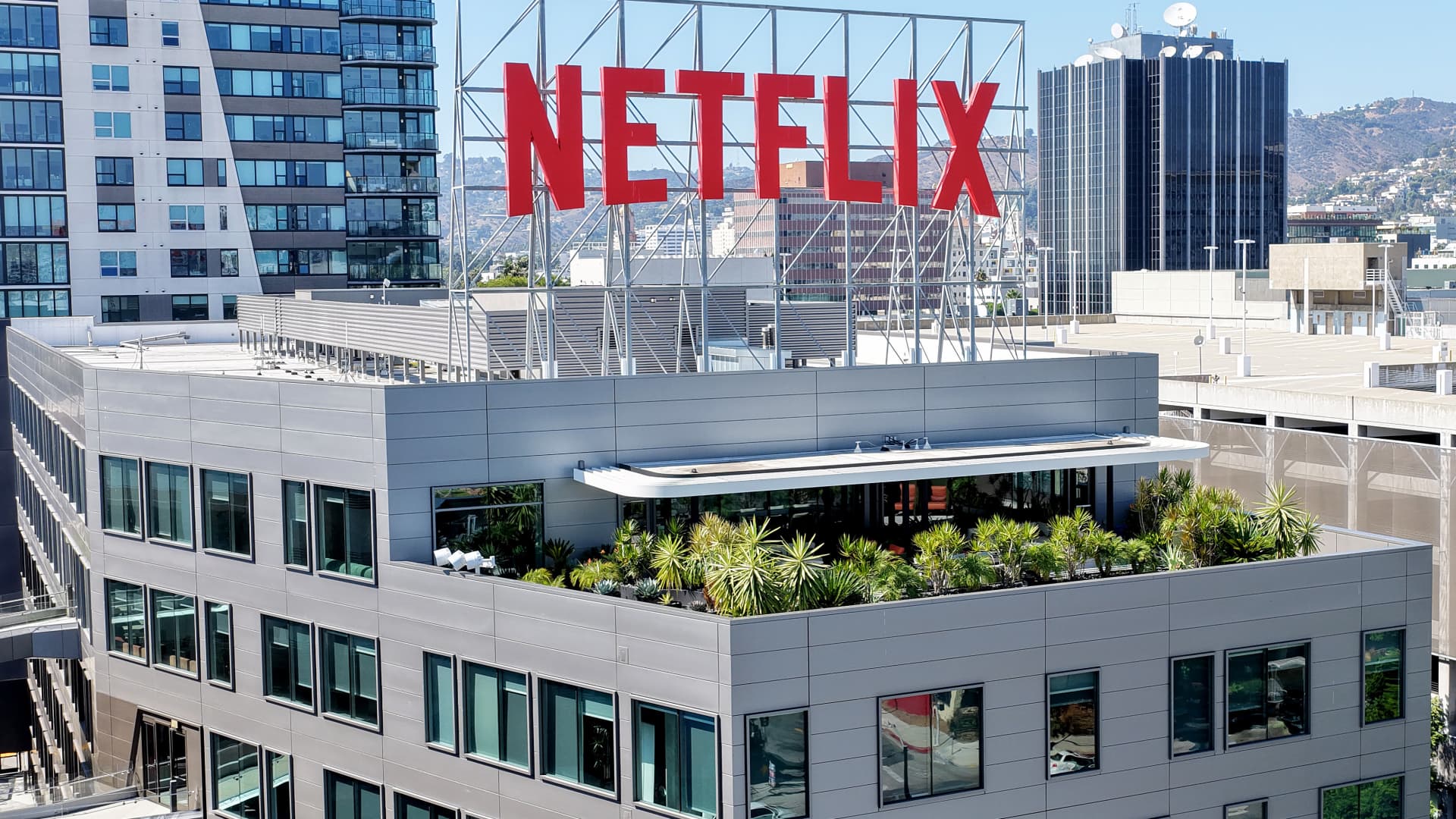With Netflix trading below from its 200-day moving average, the time to buy into the dominant streaming platform is now, says Josh Brown, CEO of Ritholtz Wealth Management. Although still up 24% on the year, shares of Netflix fell 8% this week after third-quarter earnings missed analyst estimates and revenue only matched expectations. The stock fell 10% on Wednesday alone, the day after posting its third-quarter results. Shares touched an intraday low of $1,100.15 Friday, below Netflix’s 200-day moving average, which currently sits at $1,115.43. The 200-day moving average is a key technical indicator widely used by technical analysts to judge a stock’s long-term trend. NFLX 1M mountain NFLX 1M chart Now that shares have fallen below 200-day, Brown believes investors should take advantage of the opportunity to increase build new positions or widen existing ones. Brown bought more shares of Netflix, he disclosed on CNBC’s ” Halftime Report ” on Thursday. “I do think the buyers will show up here as they have in the past. I do think if it does break below [the 200-DMA], it’ll be very temporary,” he said. “I think the 200-day has worked like a charm in terms of [a] good opportunity to accumulate shares of Netflix the whole way up.” Brown stressed he has a bullish, long-term view on Netflix, calling it one of the “five most important technology platforms in existence.” Catalysts include its strong content slate and growing advertising profits, which could boost the stock from current levels, he wrote in a recent piece for CNBC. Paul Meeks, head of technology research at Freedom Capital Markets, echoed Brown and urged buying Netflix. In a recent interview, Meeks told CNBC he’d “buy it with both hands” should Netflix dip below its 200-day moving average. History shows that average forward returns have generally been positive after Netflix closed below its 200-day moving average, after first closing above the 200-DMA at least 100 days in a row. Netflix closed below its 200-DMA on Thursday. In the seven times this has happened in the past 12 years, Netflix’s forward returns were positive five times after six months, and positive four times after 12 months. The average forward return over the past seven occurrences has been a gain of nearly 17% over the following six months and an average 25% advance in 12 months. DISCLOSURES: All opinions expressed by the CNBC Pro contributors are solely their opinions and do not reflect the opinions of CNBC, NBC UNIVERSAL, their parent company or affiliates, and may have been previously disseminated by them on television, radio, internet or another medium. THE ABOVE CONTENT IS SUBJECT TO OUR TERMS AND CONDITIONS AND PRIVACY POLICY . THIS CONTENT IS PROVIDED FOR INFORMATIONAL PURPOSES ONLY AND DOES NOT CONSITUTE FINANCIAL, INVESTMENT, TAX OR LEGAL ADVICE OR A RECOMMENDATION TO BUY ANY SECURITY OR OTHER FINANCIAL ASSET. THE CONTENT IS GENERAL IN NATURE AND DOES NOT REFLECT ANY INDIVIDUAL’S UNIQUE PERSONAL CIRCUMSTANCES. THE ABOVE CONTENT MIGHT NOT BE SUITABLE FOR YOUR PARTICULAR CIRCUMSTANCES. BEFORE MAKING ANY FINANCIAL DECISIONS, YOU SHOULD STRONGLY CONSIDER SEEKING ADVICE FROM YOUR OWN FINANCIAL OR INVESTMENT ADVISOR. INVESTING INVOLVES RISK. EXAMPLES OF ANALYSIS CONTAINED IN THIS ARTICLE ARE ONLY EXAMPLES. THE VIEWS AND OPINIONS EXPRESSED ARE THOSE OF THE CONTRIBUTORS AND DO NOT NECESSARILY REFLECT THE OFFICIAL POLICY OR POSITION OF RITHOLTZ WEALTH MANAGEMENT, LLC. JOSH BROWN IS THE CEO OF RITHOLTZ WEALTH MANAGEMENT AND MAY MAINTAIN A SECURITY POSITION IN THE SECURITIES DISCUSSED. ASSUMPTIONS MADE WITHIN THE ANALYSIS ARE NOT REFLECTIVE OF THE POSITION OF RITHOLTZ WEALTH MANAGEMENT, LLC” TO THE END OF OR OUR DISCLOSURE. Click here for the full disclaimer.





